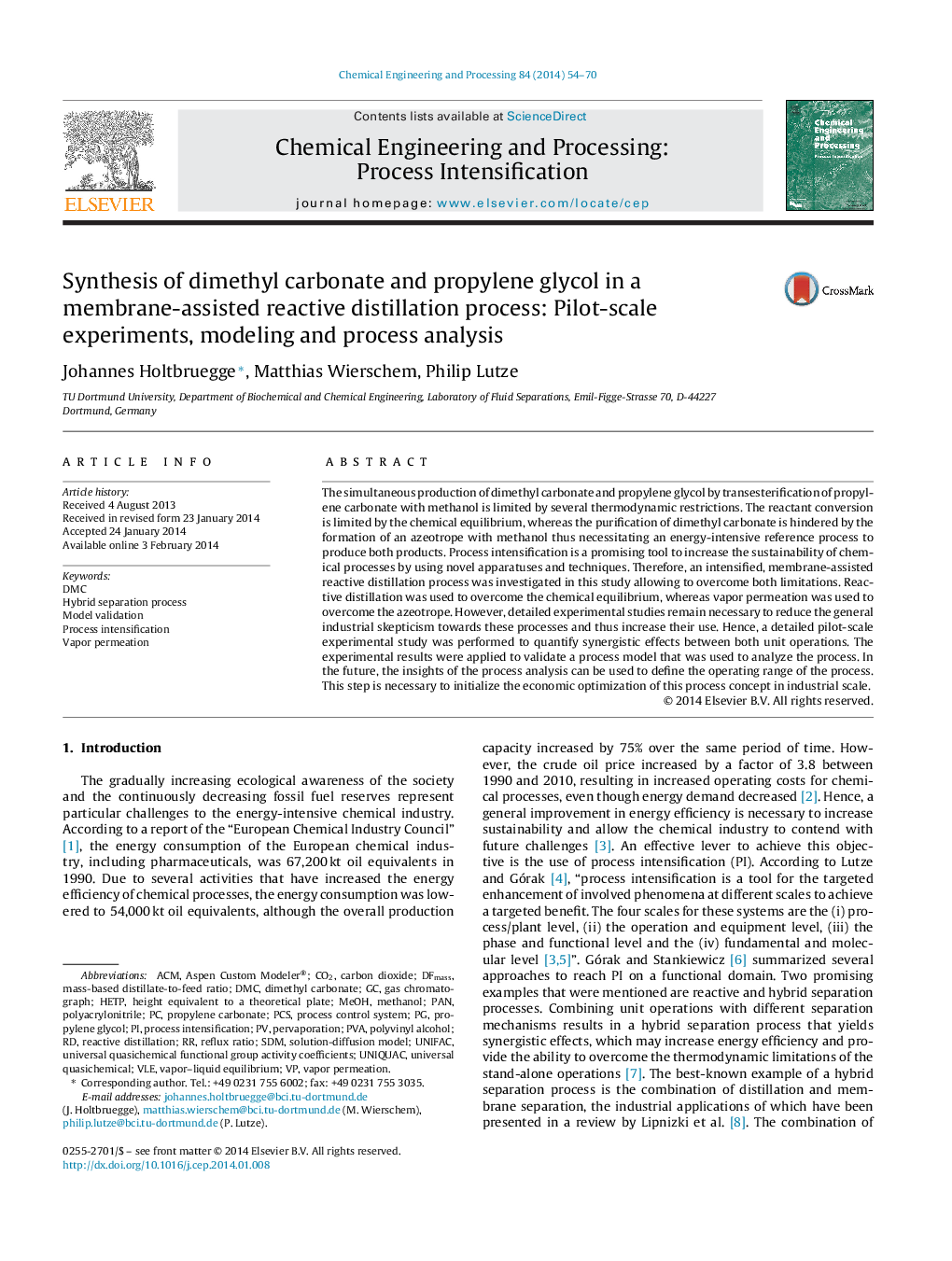| کد مقاله | کد نشریه | سال انتشار | مقاله انگلیسی | نسخه تمام متن |
|---|---|---|---|---|
| 688178 | 1460093 | 2014 | 17 صفحه PDF | دانلود رایگان |
• Steady-state experiments in pilot-scale membrane-assisted reactive distillation performed.
• Feasibility of the membrane-assisted reactive distillation process concept shown.
• Synergies between reactive distillation and vapor permeation quantified.
• Rate-based process model successfully validated using experimental data.
• Process analysis performed underling potential of membrane-assisted reactive distillation.
The simultaneous production of dimethyl carbonate and propylene glycol by transesterification of propylene carbonate with methanol is limited by several thermodynamic restrictions. The reactant conversion is limited by the chemical equilibrium, whereas the purification of dimethyl carbonate is hindered by the formation of an azeotrope with methanol thus necessitating an energy-intensive reference process to produce both products. Process intensification is a promising tool to increase the sustainability of chemical processes by using novel apparatuses and techniques. Therefore, an intensified, membrane-assisted reactive distillation process was investigated in this study allowing to overcome both limitations. Reactive distillation was used to overcome the chemical equilibrium, whereas vapor permeation was used to overcome the azeotrope. However, detailed experimental studies remain necessary to reduce the general industrial skepticism towards these processes and thus increase their use. Hence, a detailed pilot-scale experimental study was performed to quantify synergistic effects between both unit operations. The experimental results were applied to validate a process model that was used to analyze the process. In the future, the insights of the process analysis can be used to define the operating range of the process. This step is necessary to initialize the economic optimization of this process concept in industrial scale.
Figure optionsDownload as PowerPoint slide
Journal: Chemical Engineering and Processing: Process Intensification - Volume 84, October 2014, Pages 54–70
